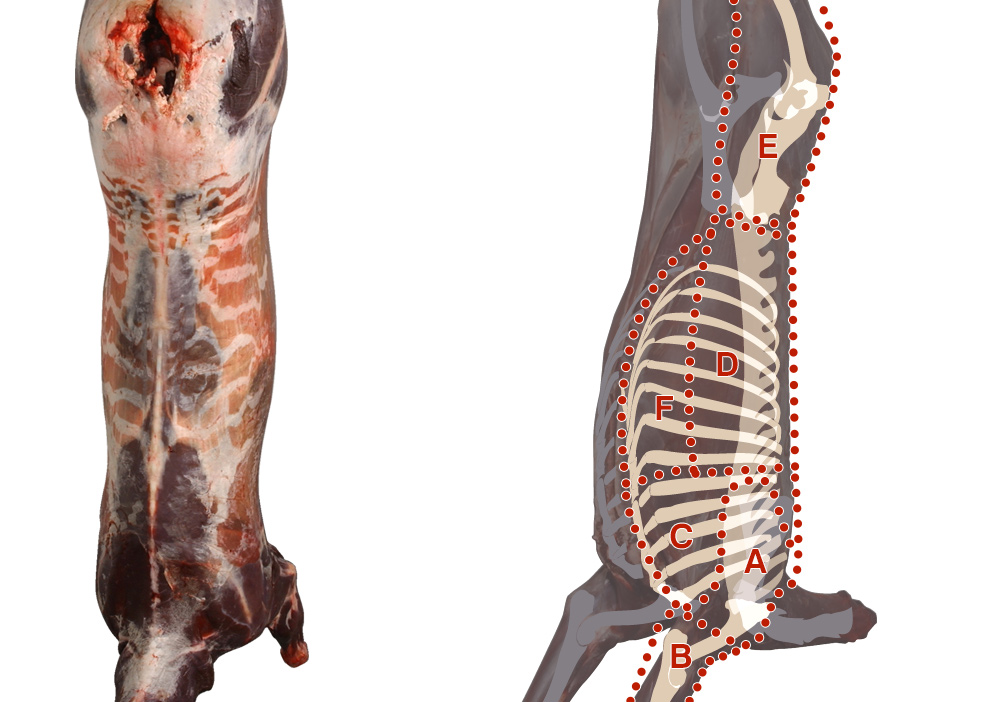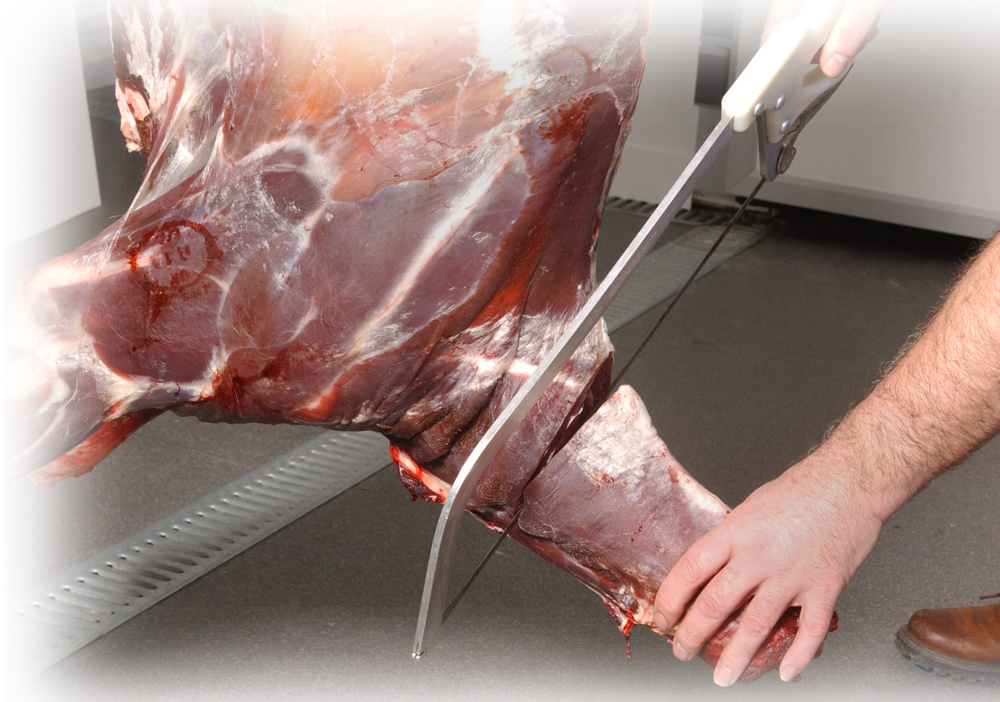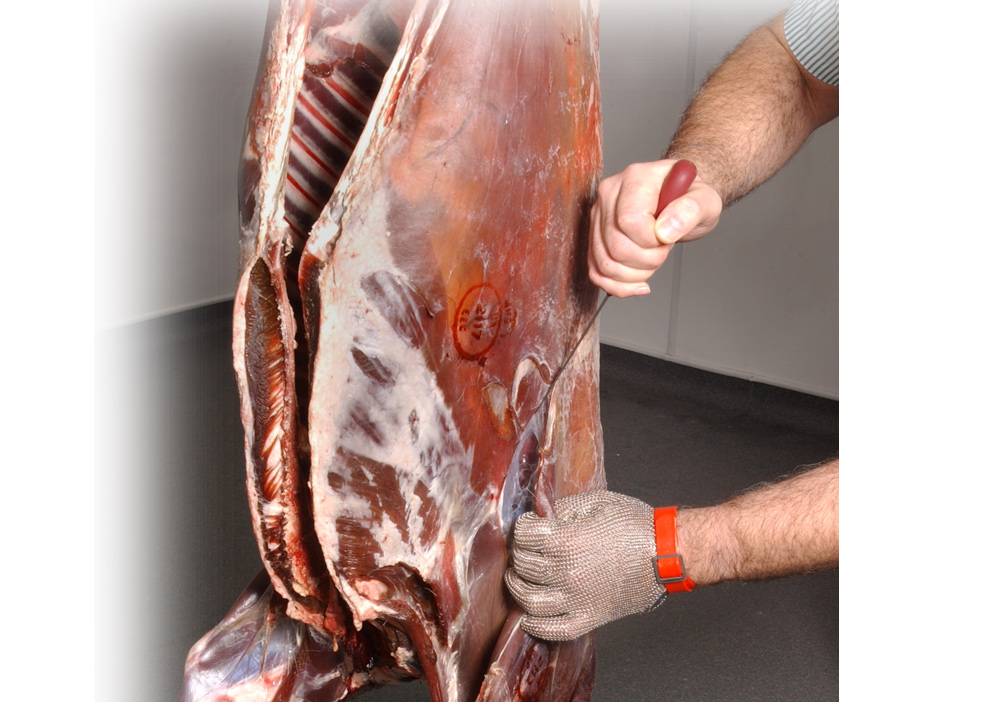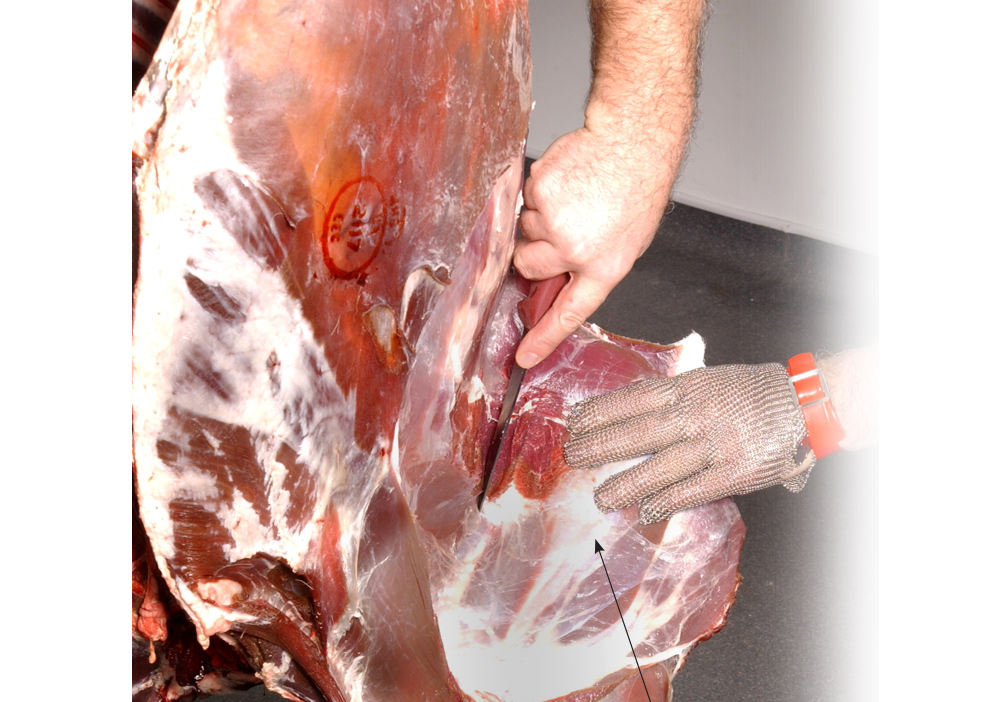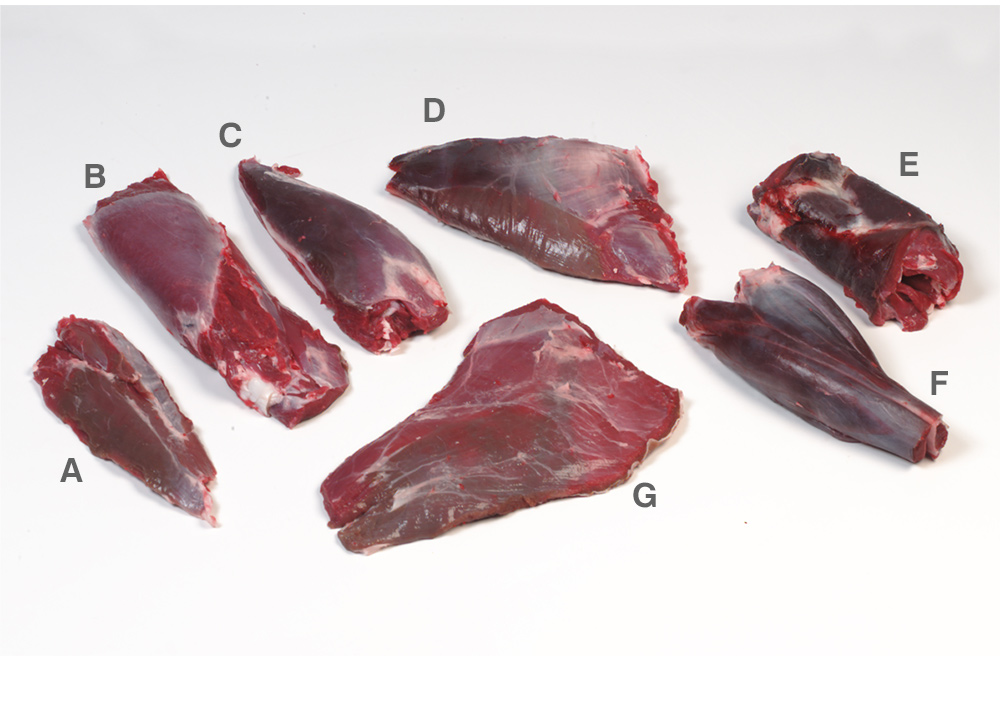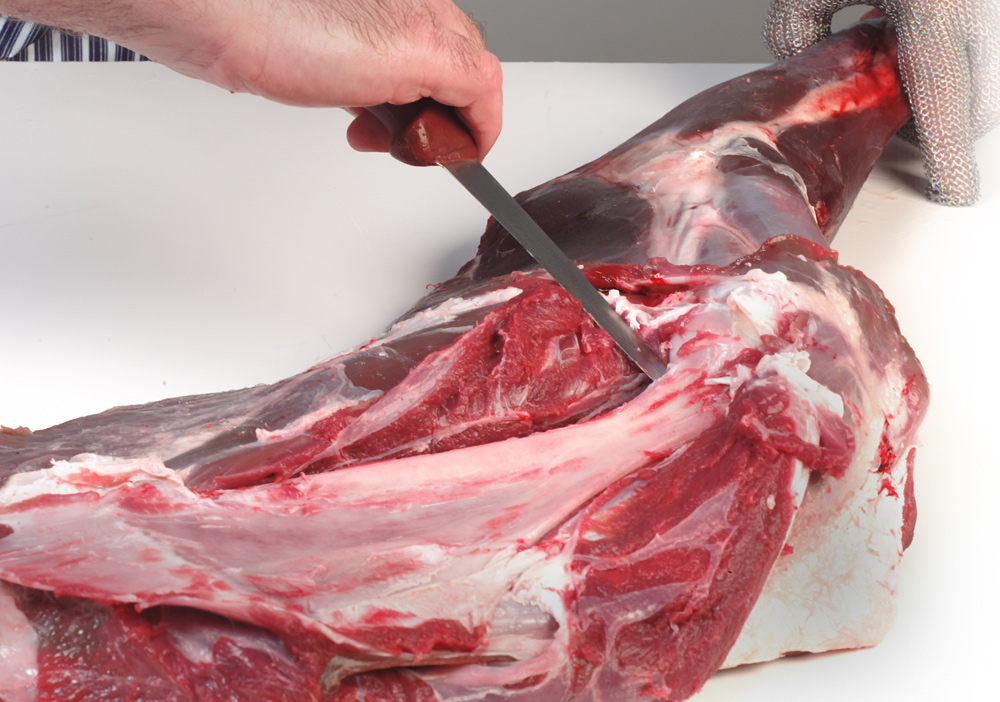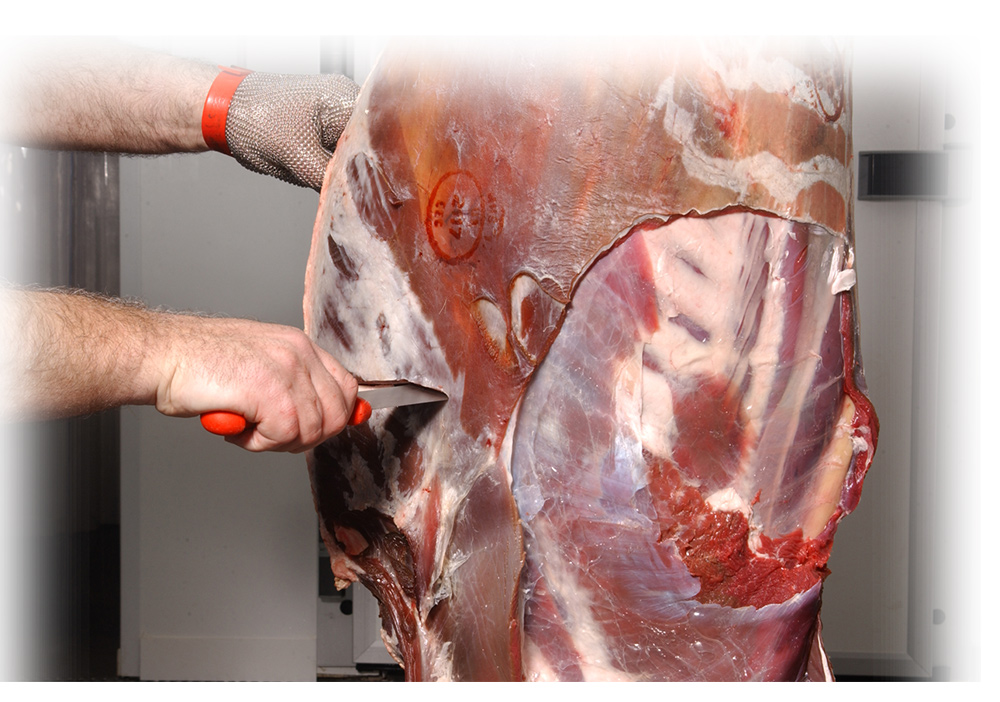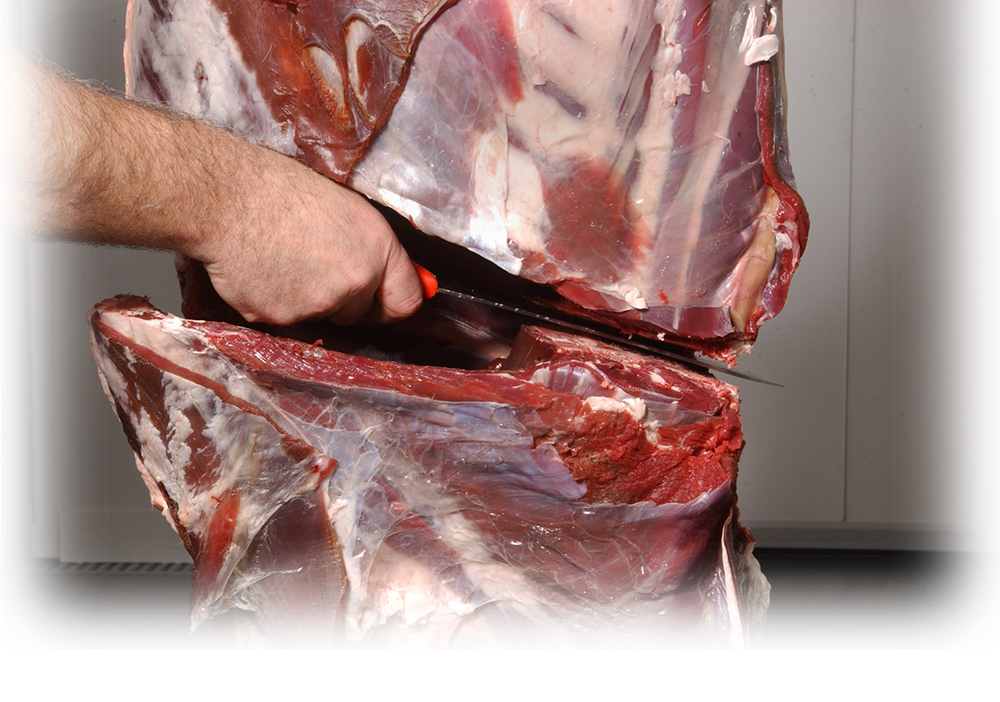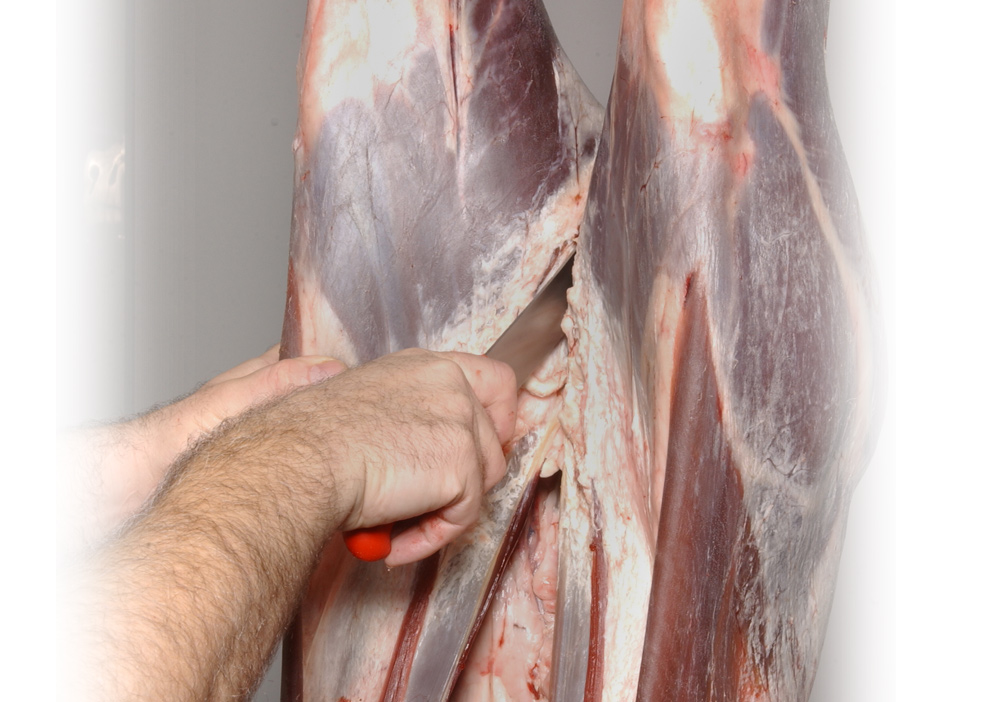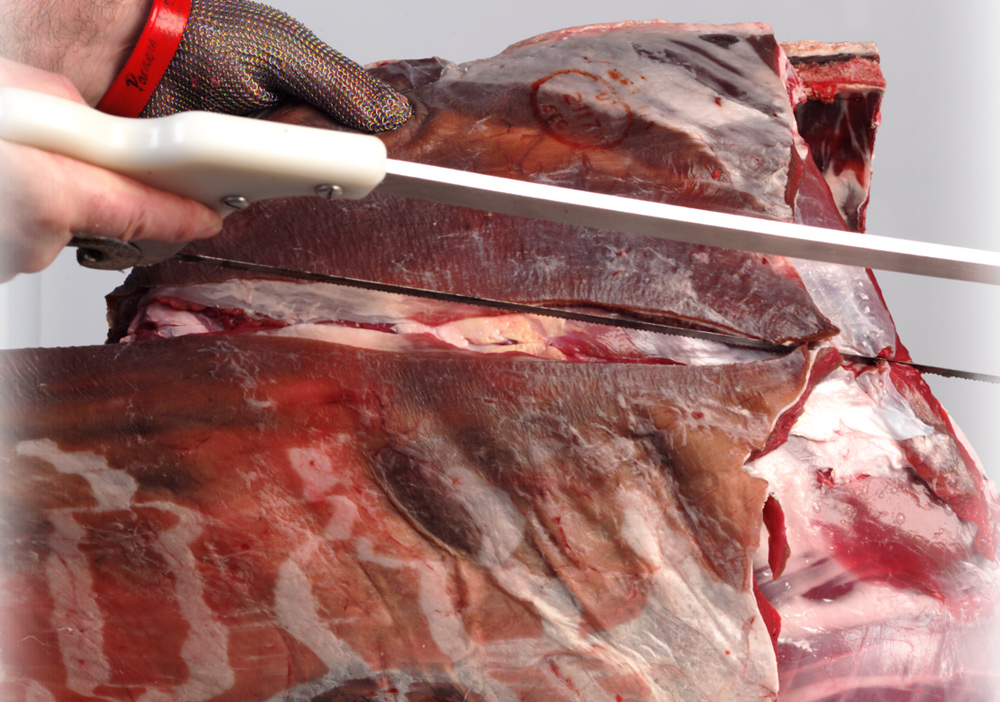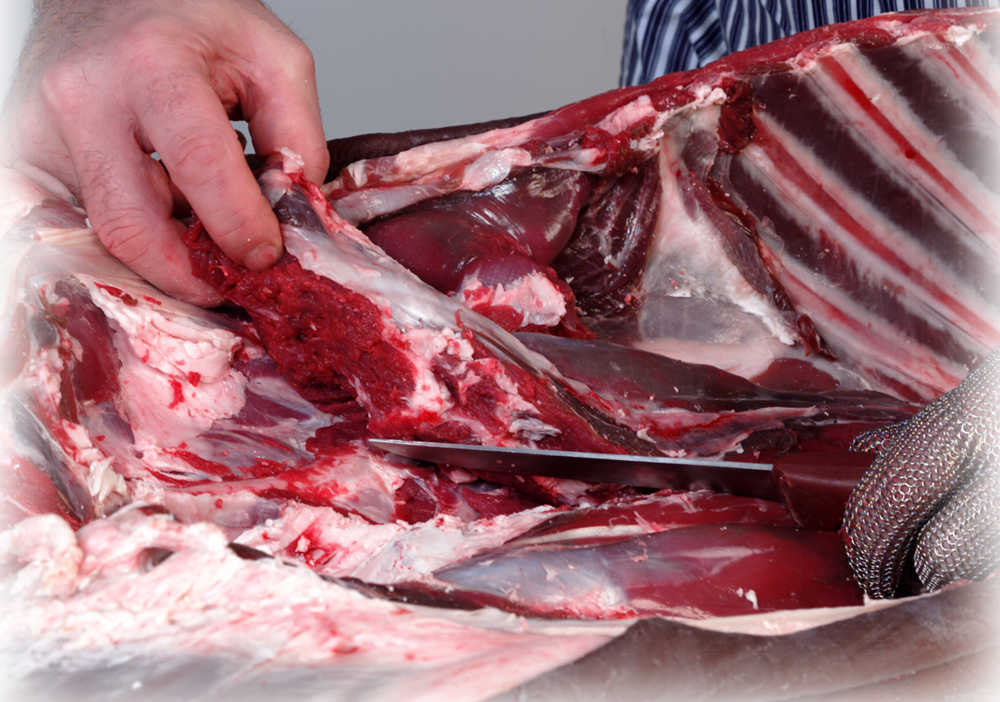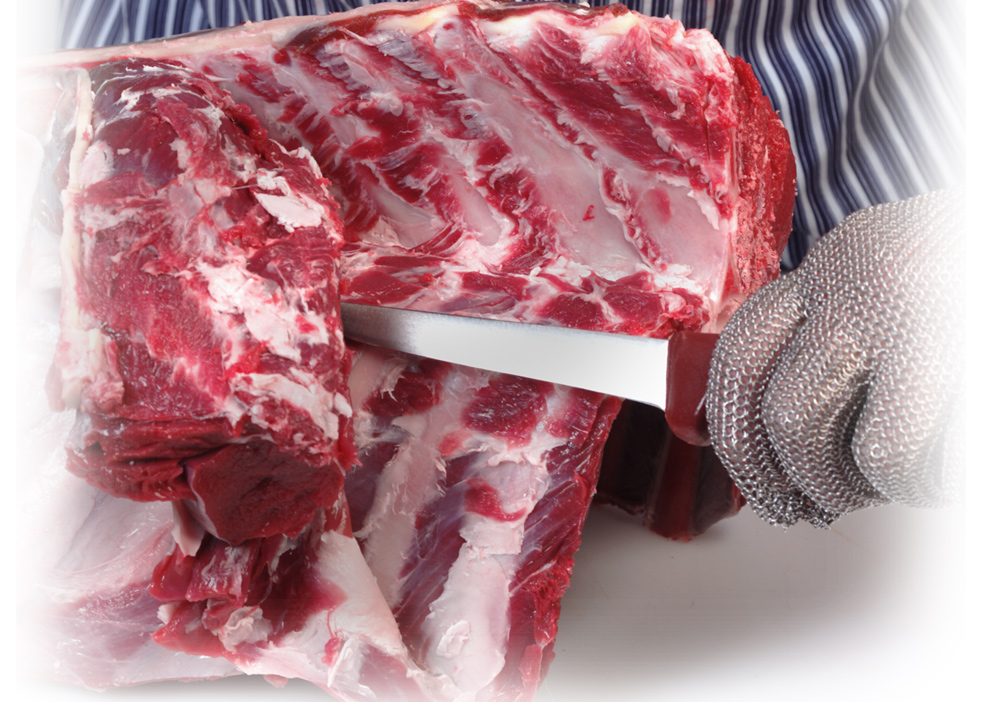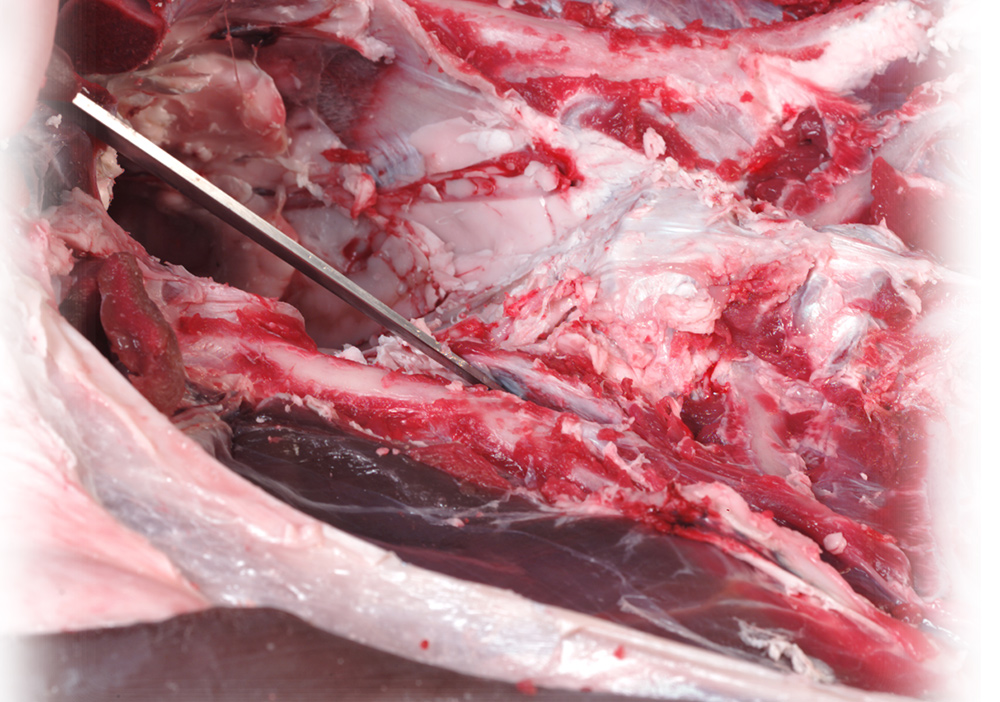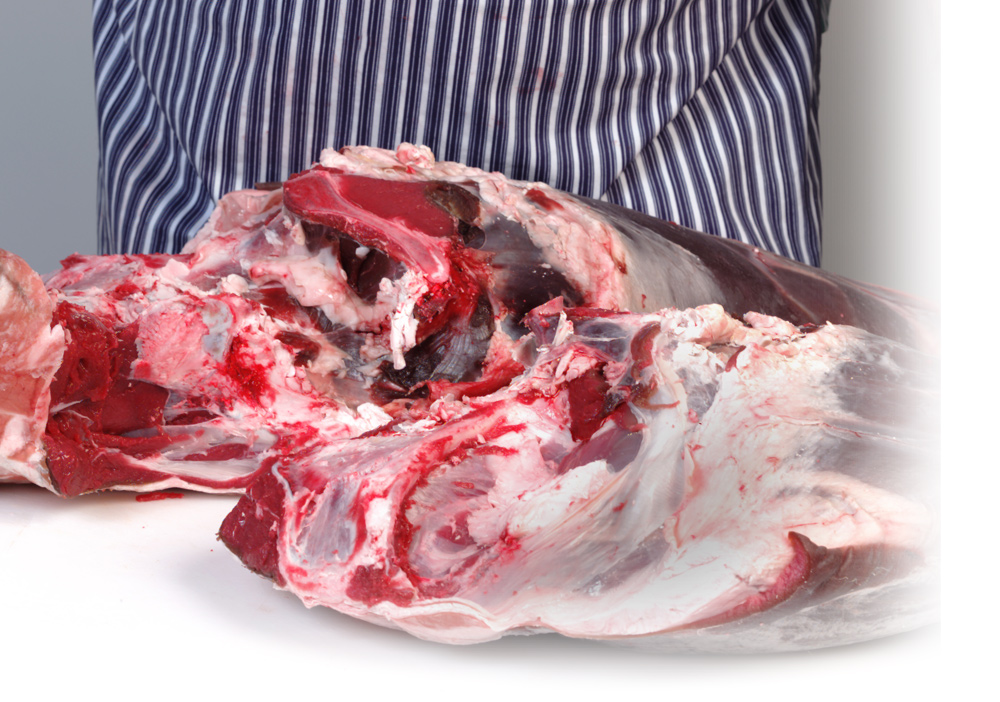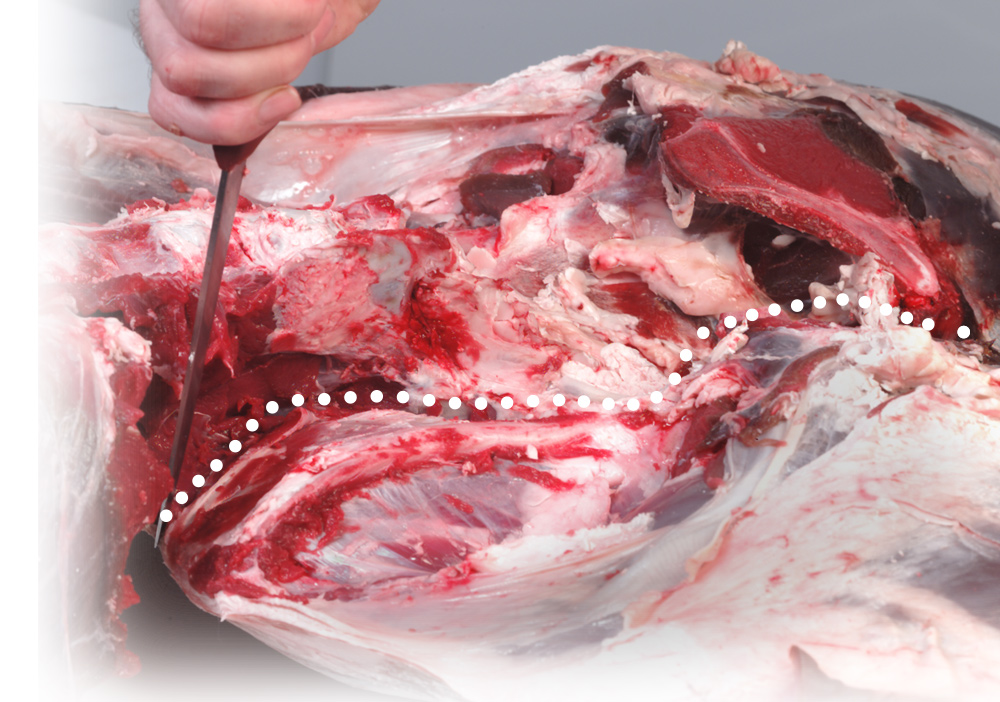Introduction
The aim of this guide is to provide a basic introduction to venison butchery covering the primal breakdown of a venison carcass. Note that once a carcass is skinned, it is no longer a “primary product” but becomes venison and is subject to different legislation with respect to processing and supply. This guide is linked to the Carcass Preparation series of guides.
Skinning and storage
Ideally the carcass should be skinned while warm, or as soon as it has been lardered. The carcass may still be warm after skinning, if possible allow it to cool without chilling for 6 hours or so to ensure the full and rapid onset of rigor mortis and prevent ‘cold shortening’ of the soft muscles. The carcass should then be chilled at 1° to 4° C and could be stored for up to 10 days to ensure tenderness and maturation, depending on age. There should be no contact with other carcasses, skinned carcasses should be hung separately from any that are in skin. Whether primary cuts are made with the carcass suspended (as shown) on a cutting table will be down to individual experience and preference. Before cutting, ensure that all work areas, equipment and hands are clean, see Basic Hygiene guide.
Neck removal
To remove the neck make a square knife cut just below the fold of the shoulder and neck and then saw through the neck bone(fig.1). Clean all bone dust from both surfaces.
Shoulder block removal & preparation
The shoulder blocks are removed from the main part of the carcass by opening the seam indicated (figs. 2 & 3) and following the shape of the blade bone.
The shoulder block consists of three sections containing the blade bone, humerus bone and the fore leg. To prepare the shoulder, these are removed separately starting with the blade bone (fig.5). Once completed the process is repeated on the other side of the carcass. The shoulder block can be further broken down into smaller cuts (fig.4).
Forequarter removal
Make an incision between the 5th and 6th rib (counting from the neck end) sliding the knife against the 5th rib. Repeat on other side. Saw through the sternum bone (fig.6). Make a square cut to the backbone on both sides, lining the cuts up across the back. Saw through the backbone keeping the saw in line with the ribs. If the carcass is hanging make sure that the detached forequarter does not touch the floor. All bone dust must be removed from both surfaces. Trim out any bullet damage. The meat from each side of the forequarter can be removed in one piece and rolled into a joint, or cut into stewing meat. Any trim can be used for mince.
Splitting the aitch bone
- Using a knife, make one long cut exactly in the centre of the two haunches onto the pelvic bone, exerting some pressure on the knife. In a young animal the aitch bones can the be divided through the cartilage. On older animals a saw will be needed to part the two haunches (fig.1). Make sure that if a saw is used all bone dust is removed from both surfaces.
Breakdown of saddle & haunches
The following processes are carried out on the cutting table for ease of operation.
Flank removal
- Make a cut along the ribs, parallel to the backbone. The distance of the cut from the backbone will determine the length of the ribs according to requirements and the size of the carcass. Leave the ribs long if the loins are to be rolled into joints at a later stage, or cut shorter for steaks. Repeat the process on the other side.(fig.2).
Kidney and suet fat removal
- The kidneys and fat surrounding them is removed carefully by easing away the suet from the abdominal cavity, take extreme care not to cut into any underlying muscles when carrying out this operation.
Tenderloin (fillet) removal
- To enable the carcass to be broken down into haunches and a saddle the tenderloins are removed completely first.
- Cut around the head of the tenderloin and cut away from the pelvic bone.
- To remove the tenderloins follow the vertebrae on each side of the carcass to remove completely intact (fig.3). The lumbar vertebrae have ‘T’ bones that are exposed when the tenderloins are removed.
Striploin removal
- As an alternative to leaving the saddle on the bone, the strip loin meat can be removed in one piece, if this is done before the forequarters are removed the strip will be longer. Use the sheet boning method to remove the striploins from each side of the vertebrae. Care must be taken to ensure that the knife is always pressed onto the bone. (fig.4).
Haunch removal
- Situated on top of the pelvic cavity the point where the sacrum (tail) is connected to the aitch bone is a fused joint. This can be opened by inserting a boning knife at the angle demonstrated (fig.5). Follow the division towards the tail area and the haunch falls away.
- Cut around the end of the aitch bone as shown (fig.6 & 7). The process is then repeated on the other side to remove the opposite haunch.
Haunch preparation
The haunch can be further broken down into smaller cuts (see fig.10 overleaf).
Aitch bone removal
- Carefully remove the aitch bone without any incisions into the underlying muscles of the haunch. (fig.1)
Shin removal
- Open the stifle joint between the shin and the main part of the haunch (fig.2).
- Remove the shin by first cutting the Achilles tendon and then following the seam leading to the opened stifle joint (fig.3). After removal the shin is deboned.
Haunch muscle separation
- Divide the haunch firstly by the seam indicated by the arrows on top of the thick flank muscle. (fig 4 & 5)
- Use a boning knife to detach the muscles attached to the femur. When the bone is fully exposed the whole of the bone can be viewed from end to end. (fig.6)
- Remove the femur bone carefully by detaching the muscle with the boning knife and then, using the fingers to clean the meat from the bone, remove the bone clean from the haunch. Remove the patella or knee cap to produce a boneless haunch. (fig.7)
- Remove the thick flank muscle by following the silver wall gristle indicated by the arrow. (fig. 8)
- After removing the rump, split the topside and silverside by the seam shown. (fig.9)
[printfriendly]
